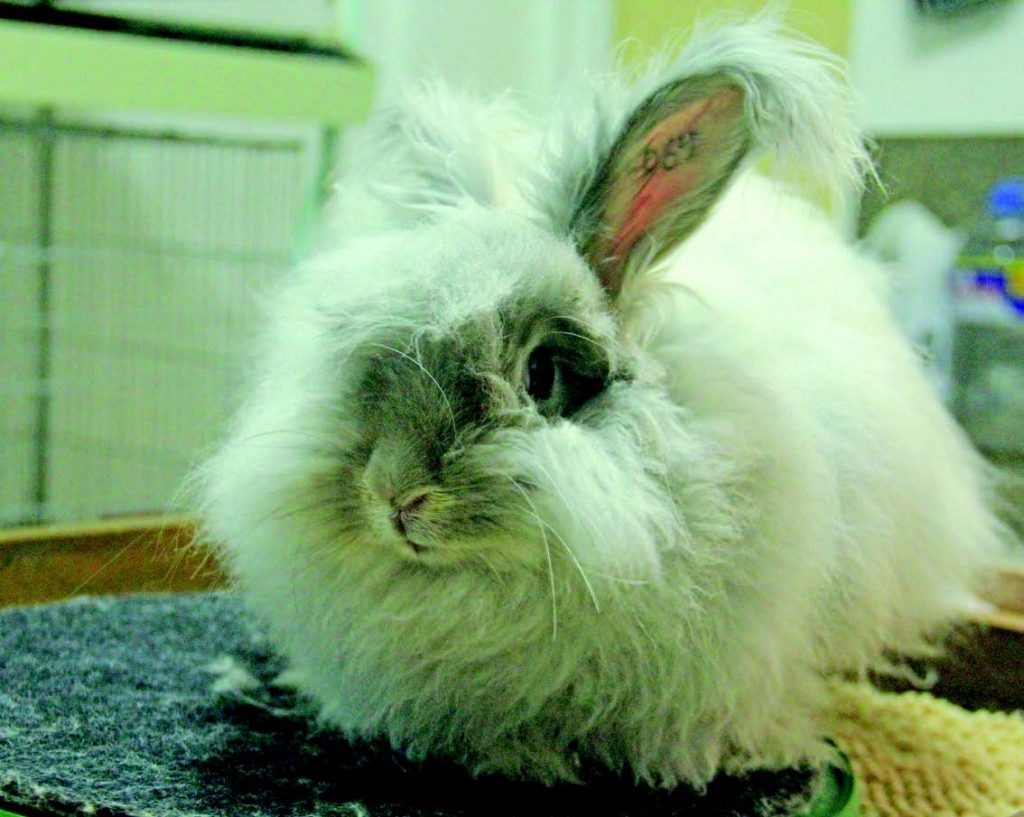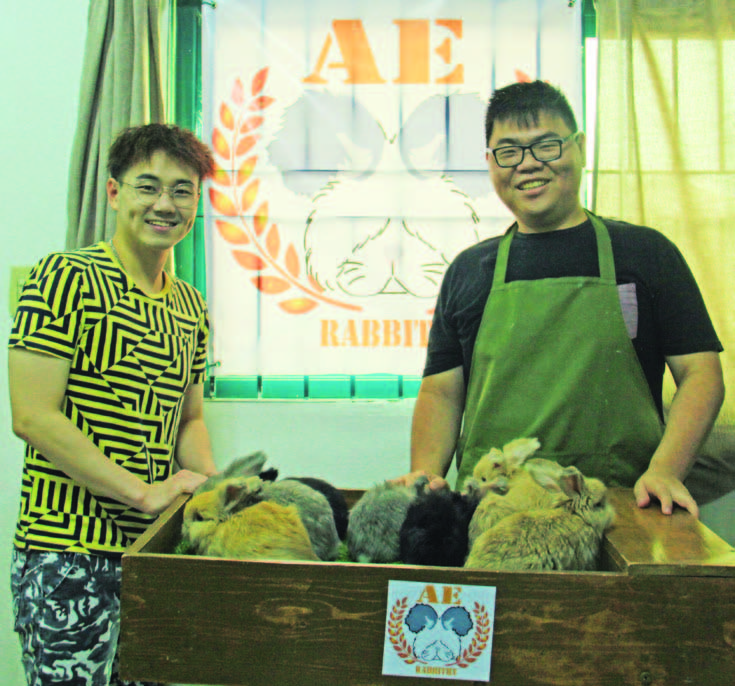Famous for its luxurious pelage and cloud-like appearance, the English Angora rabbit is the smallest among the four breeds under the Angora family. They originated in Ankara, Turkey about 200 years ago. Agouti, pointed white, self, shaded, ticked, and wide band are the six patterns in this group.
Short-coupled, compact with full chest and full round shoulder built, English Angora falls under the medium breed of rabbits. A female weighs around 5 to 7.5 pounds while a male weighs 5 to 7 pounds. The ideal weight is 6.5 and 6 pounds, respectively.

Their coat grows 2 to 3 inches away from the body, giving them their fluffy look. Another distinguishing feature of this breed is their short, erect ears that resemble a V shape, with hair that hangs like fringes and tassels.
Although known as a friendly animal with a good temperament towards children, angoras may not make ideal companions for kids because of their grooming needs.
It is harder to tell if a rabbit is losing weight because of all their hair. That is why it is advisable to regularly touch their body.
We all know that welcoming a hopping cloud to our family may come with surprises, which is why one should know how to care for long-haired rabbits. Not being able to commit to the daily grooming may lead to health issues.
Grooming
Animal Scene interviews Alex Ong, pet parent of the Best of Breed and Best of Opposite Breed winners for English Angora during the recent RabbitConPH 2018.

Ong is a Malaysian currently based in the Philippines. He has a pair of rabbits back home which was why he finally decided to raise English Angoras here in the Philippines.
He describes English Angoras as meek, calm and gentle rabbits. They are very affectionate and friendly. He pointed out their cute, unique-looking face and the heavy wool coat.
Alex briefly discusses how the length of the fur is dependent on the age of the rabbit, which dictates the frequency of grooming as well: “At four weeks of age, I cut down their fur to let them grow [a new coat]. I groom my two- to three-month-old rabbits once a week – twice a week for three- to five-month-old rabbits, and three times a week to daily for rabbits above five months of age.”
The grooming frequency not only depends on the age but also the matting of the coat.

Ong mentions how some rabbits are more predisposed to exhibit matting. Some show matting from the inside, from the wool next to the skin, while others do so initially on the outside. Those who are prone to matting, especially the ones who show matting from the inside, should be groomed more often.
Housing setup also plays a vital role in the maintenance of the fur of the rabbit. The cage material should not stain their fur. Proper drainage is necessary, and litter should be checked regularly to ensure their droppings and pee do not stain the their fur.
Ong says he hardest part of keeping this specific breed of rabbit is coat maintenance, which is influenced by the weather and grooming frequency. English Angoras are very susceptible to illness due to heat, drafts, and wetness. This is why he puts his rabbit in an air-conditioned room.
It is also better to use a water bottle nipple drinker than a bowl with water for minimal wetting of the head. J feeders are convenient, but an inside feeder wide enough not to damage the head furnishing of the rabbit would be thebest choice.
Supplements are not mandatory, although they may be beneficial. Alex recommends giving rabbits papaya tablets to help breakdown wool balls and prevent hairball blockage in the gut when they groom themselves. Supplements for coat health would also help in giving them longer, shinier fur.
Grooming tips for an English Angora

1. Find a comfortable place for grooming
Ong uses a turntable grooming stand. If one isn’t available, a sturdy table with a mat or towel on top so that the rabbit will not slip will make do.
2. Hold the rabbit gently by the ears
Hold them by the ears and the skin behind the ears. This ensures the air blower does not directly blast hot air at their ears, at the same time securing them in place while grooming.
3. Use a strong cool air blower
With a blower, check the wool closest to the skin. Do not use a hot air blower as this can hurt and damage a rabbit’s skin. Eventually, a rabbit may get used to air blowers, especially if these are used at an early age.
4. Remove any matting or webbing
Depending on the severity of the matting or webbing, you can use your fingers to untangle. Ong says one can put grooming or pet powder on the webbing to make separation easier. Combing may help as well.
5. Use a steel comb to go through the top bangs

6. Use a slicker brush on the tip of the wool
7. Use a fine-tooth plastic hair comb to smooth out the very tips of the coat
It takes around 5 to 10 minutes to groom an English Angora if they are groomed on a daily basis. It is best to groom them every day for a few minutes, rather than spending more time later on. Regular grooming also prevents matting and allows you to check their overall health.
This appeared in Animal Scene magazine’s November 2019 issue.
You might want to read:
– Rabbit season: Caring for rabbits as pets
– Into the rabbit hole with Netherland dwarfs
– Seriously cute: The Netherland dwarf rabbit






